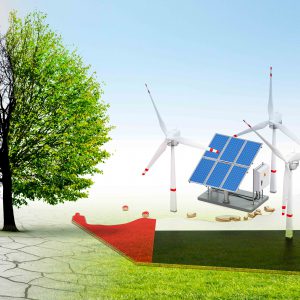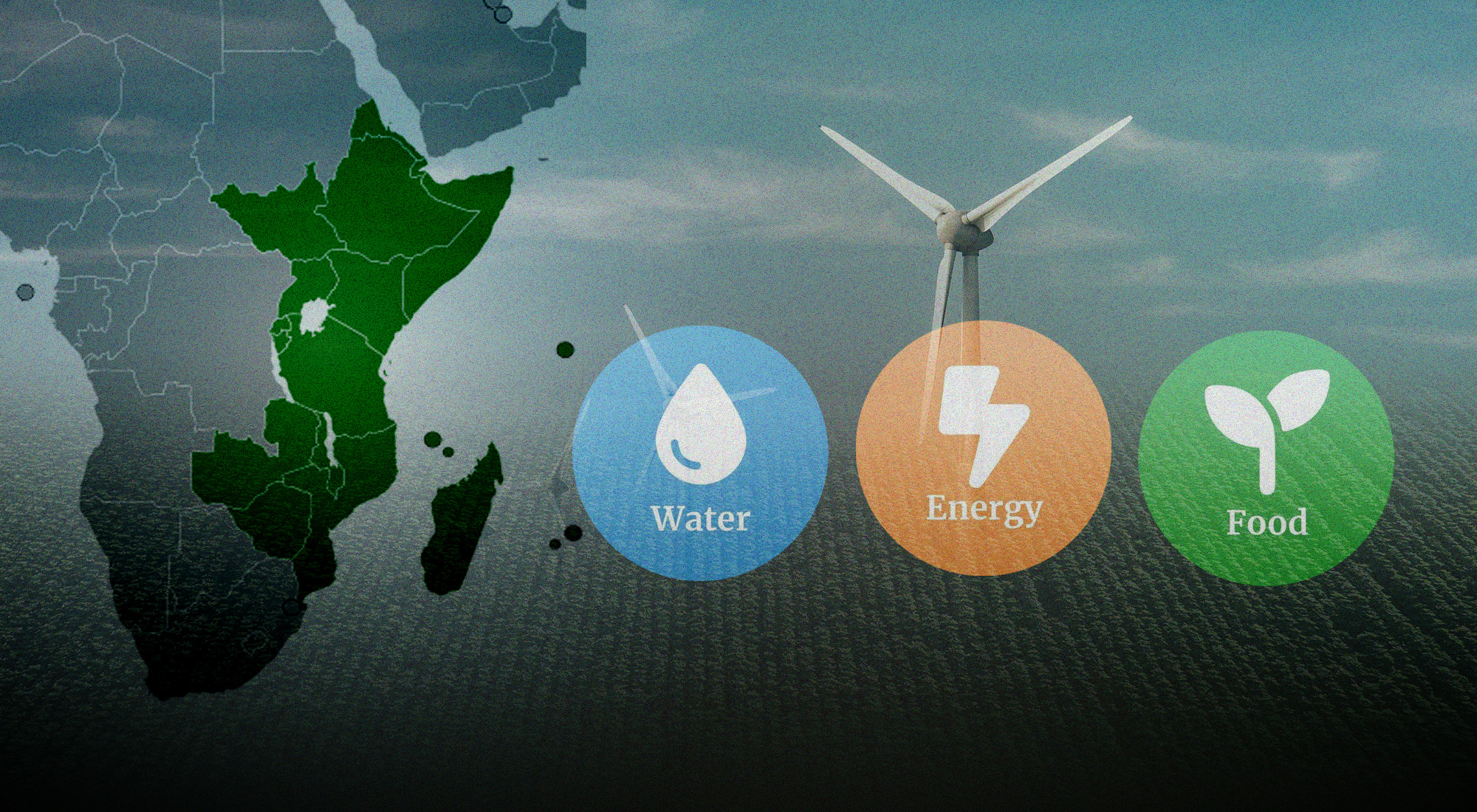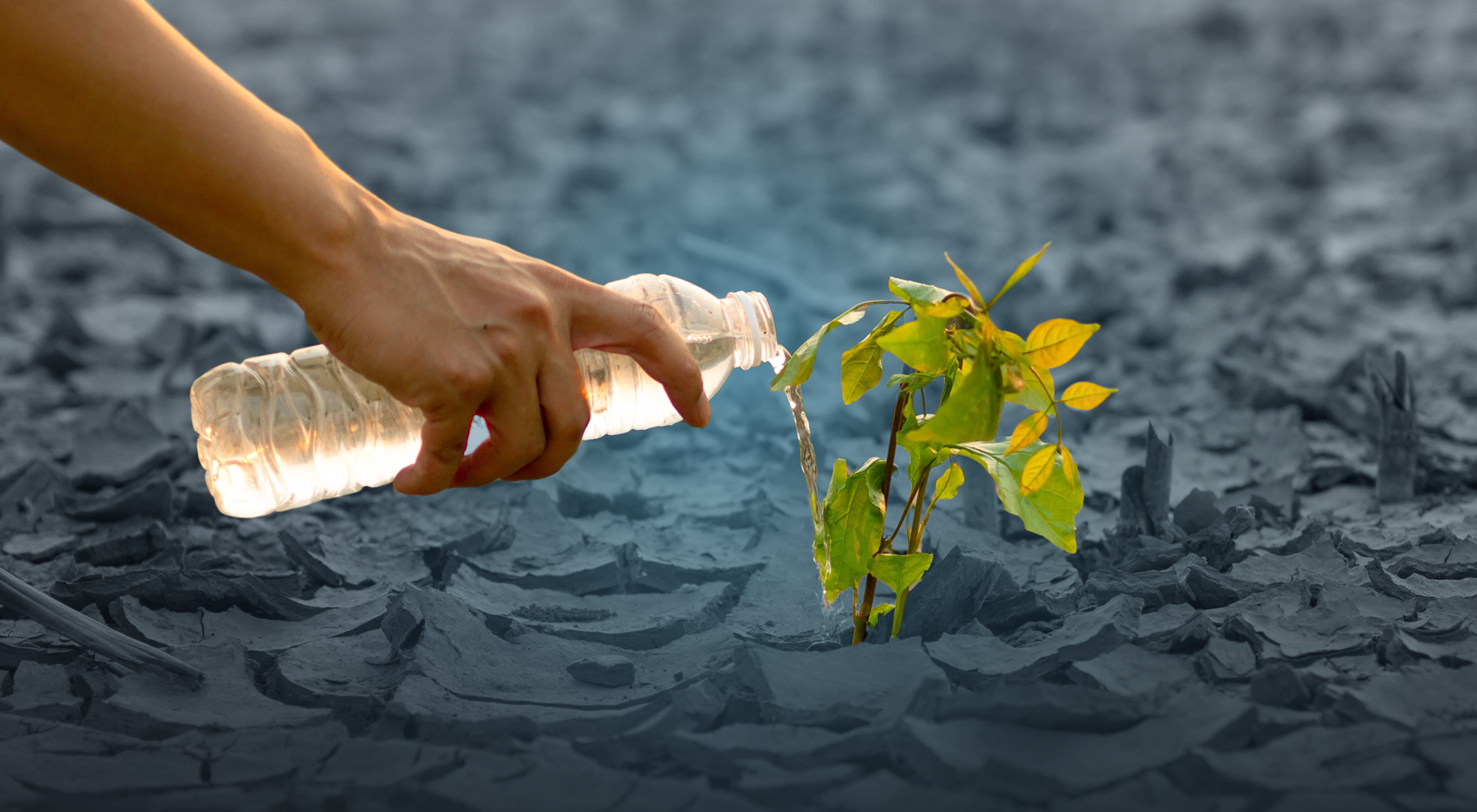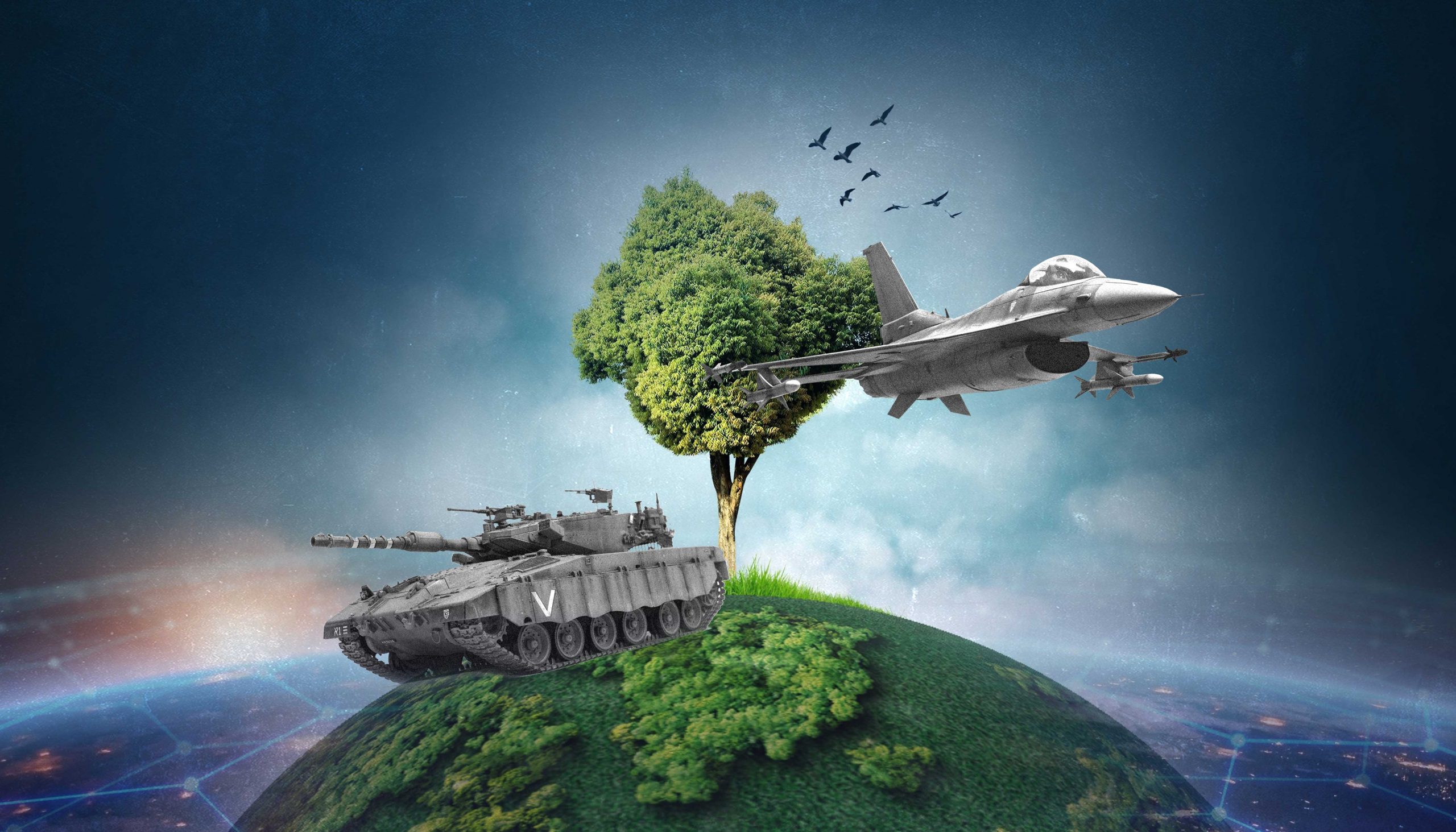Climate change is a recognized global challenge that threatens the economic and social stability of nations. However, climate change does not affect all countries equally, but some are more targeted than others due to their specific characteristics, such as geographic location, population density and urbanization, structure of the economy, and access to natural resources. The United Arab Emirates (UAE) is among the countries the most exposed to the consequences of climate change, but is often unjustly not seen as a frontrunner when it comes to environmental policies. This paper explores the actions taken and policies implemented by the UAE in what can be considered both a fight for survival and a significant growth opportunity. The following analysis starts from the impacts of climate change on the UAE, to then assess the policies in the field of green renewable energy and the growing leadership role consolidated by the UAE in international forums.
Climate change: impacts on the UAE
The covid-19 pandemic, despite its severe toll on human lives and economic terms, has not obscured the importance of climate change as a global risk. Indeed, as revealed by the Global Risk Report 2021 published by the World Economic Forum, four among the seven likely top risks are linked to the environment: extreme weather, climate action failure, human environmental damage, and biodiversity loss. At the same time, five among the eight top risks by impact are also related to the environment: climate action failure, biodiversity loss, natural resource crisis, human environmental damage, extreme weather. [1]
Besides, a report published in 2014 by the World Bank emphasized that the regions expected to suffer the most the impact of climate change are those areas with a Muslim-majority population, such as the Middle East, North Africa, and South-East Asia. Indeed, these regions appear to be the most exposed to risks derived by drought, sea-level rise, floods, temperature increases, and unpredictable monsoons. In addition, if other characteristics of the region, such as rapid urbanization, high level of population density, and water scarcity, are added to the picture, the consequences might be severe for the inhabitants of these areas. [2]
More precisely, the Gulf Cooperation Council (GCC) members – United Arab Emirates (UAE), Saudi Arabia, Qatar, Bahrain, Kuwait, and Oman – are expected to face severe climatic transformations in the near future. Minimal groundwater reserves, severely high evapotranspiration, exceptionally high levels of energetic consumption, significant demographic increases, and populations primarily concentrated on coastal cities, are all elements likely to severely damage life quality in the Gulf region. [3]
Climate change represents a global and multi-dimensional threat whose direct and indirect impacts are bound to affect not only the ecosystems but also people’s health and infrastructure security. In confronting these challenges, no country is an island, and the UAE is not an exception.
As revealed by the UAE State of Climate Report 2021 released by the Emirati Ministry of Climate Change and Environment, “the hot and arid desert climate of the region contributes to making it (the UAE) especially vulnerable to climate impacts.” [4] Indeed, climate projections presented in the report disclose an alarming scenario for 2050. The country already recorded an increase of 2°C between 1950 and 1980, but an exponential acceleration has taken place in the last decades with a further substantial increase in the temperature’s average level is expected in the future. Due to rising temperatures, higher levels of superficial water evaporation and a considerable rise of sea water salinity are likely phenomena. In addition, more and more erratic rainfall, increasing sea-level rise, unpredictable extreme weather, and the gradual depletion of groundwater resources are bound to add further pressure in an already worrying scenario. [5]
The physical impacts of climate change on the Emirati ecosystem will inevitably affect the country’s infrastructure, the public health of its citizens and residents, and its water and agricultural security. The coastal urbanized areas – which are home to most Emirati populations as well as energy and logistic infrastructures, production facilities, and service sector installations – are highly exposed to damage and deterioration caused by the sea-level rising, floods, and tropical storms. Besides, increasing temperatures are likely to lead to mounting heat stress-related illnesses and rising demands for energy necessary to mitigate hotter summers. Furthermore, the growing level of water salinity will probably result in higher energy demand necessary to sustain additional water processing in the desalination plants. [6]
However, rising levels of awareness concerning the direct and indirect impacts of climate change among the UAE’s leadership and society bring the promise of remedial action. Moreover, the fact that not only the ecosystems of the country are at risk, but also those sectors that are considered the driving forces at the core of the Emirati economic diversification strategy, such as tourism, logistics, and services, has pushed the UAE to design and implement several adaptation and mitigation initiatives.
The gradual acceleration of a long-dated path
The recent announcement of H.H Sheikh Abdullah bin Zayed Al Nahyan, Minister of Foreign Affairs and International Co-operation, launching the bid for hosting in the UAE the United Nations Climate Change Conference (COP 28) scheduled for November 2023, demonstrates the rising relevance of the climate change issue among the policy priorities of the Emirates. [7]
However, even though the interest of the UAE in eco-friendly policies seems to be a recent phenomenon, it is crucial to emphasize that the seeds of this posture should be found in the actions and the vision of Sheikh Zayed bin Sultan Al Nahyan, the Founding Father of the country. Indeed, he is widely associated with an early – and properly Emirati – form of environmentalism. This focused on greening the country and fighting the threat of desertification through the development of projects aiming at promoting the plantation of new trees, the conservation of the local wildlife, and the preservation of domestic environmental heritage sites. [8] His role has also been consecrated at the international level when Sheikh Zayed bin Sultan was posthumously awarded the Champion of the Earth award by the UN Environmental Programme in 2005. [9]
The UAE’s engagement in environmental matters intensified after the country adhered to the Kyoto Protocol as a Non-Annex I Party and established the Ministry of Environment and Water (MOEW), in 2005 and 2006 respectively. [10] Moreover, the launching of the Masdar Initiative in 2006 – aimed at creating a carbon-neutral city near Abu Dhabi designed to become a renewable energy and clean technology global hub –contributed considerably to pushing forward the Emirati environmental agenda. [11]
The UAE persevered on this path throughout the 2010s with the gradual integration of climate change within the country’s strategic priorities. In 2011, the UAE released the UAE Vision 2021, a plan aiming at increasing the proportion of clean energy in the total energy mix to 24 per cent, a percentage later revised upwards to 27 per cent in 2016. [12] The UAE Green Growth Strategy followed up in 2012 as a blueprint for implementing the eco-friendly and sustainable goals enshrined in the UAE Vision 2021. [13]
However, significant achievements were attained in 2016, parallelly with the ratification by the UAE of the COP21 Paris Agreement. The latter is a legally binding international treaty on climate change that aims to reduce the global greenhouse gas (GHG) emission “to limit global warming to well below 2, preferably to 1.5 degrees Celsius, compared to pre-industrial levels.” [14]
In this context, the MOEW was restructured and reorganized to create the Ministry of Climate Change and Environment (MOCCAE). The announcement of a new Ministry focused on implementing mitigation and adaptation policies represented a stepping stone in the UAE’s efforts to comprehensively address the impacts of climate change. [15] Besides, the UAE Council of Climate Change and Environment was inaugurated. The Council operates at the federal level as a conjunction node among the ministries, local authorities, and private entities of the different Emirates to ensure a coordinated implementation of the UAE Green Agenda 2015-2030 and the other eco-friendly initiatives. [16]
A year later, in 2017, the National Climate Action Plan of the United Arab Emirates 2017-2050 was released. The plan constituted a significant innovation since it established a national roadmap guiding the country in attaining its climate and mitigation and adaptation ambitions. More precisely, the plan aims to manage GHG emission while sustaining economic growth, increasing climate resilience by minimizing risks, improving adaptive capacity, and advancing the UAE’s economic diversification agenda through innovative solutions. [17]
Finally, in December 2020, the UAE was the first country among the GCC members to submit the second Nationally Determined Contribution (NDC) within the Paris Agreement framework. The new NDC has set as a target the reduction by 23.5 per cent of the Emirati GHG emissions for the year 2030 relative to the business-as-usual scenario and has confirmed the country’s commitment to pursuing effective mitigation and adaptation measures as part of its economic diversification’s strategy. [18]
The Emirati regional leadership in the alternative energy resources’ sector
As pointed out before, the impact of climate change represents a double-edged sword for the UAE. The country is vulnerable to the physical impacts of climate change, such as rising temperatures, unpredictable extreme weather events, and sea-level rises. At the same time, the structure of its economy – which is primarily based on oil and gas exports – is susceptible to those mitigation and adaptation measures aimed at curbing the global consumption of fossil fuels.
For these reasons, even though oil and gas exports are bound to remain a considerable source of its revenues for the time being, the UAE has decided to define, structure and implement economic diversification policies that look at renewable energies as a viable path to reorientate the country from fossil fuels dependency. In this context, the looming impact of climate change does not exclusively represent a threat to the country, but offers an opportunity for the UAE to enhance its diversification projects and to cultivate its global image as a country at the forefront in the fight against dramatic environmental transformations. [19]
A technical area where the UAE has successfully built incomparable expertise at the regional level is renewable energy. Undoubtedly, a primary driving factor for a wide diffusion of renewable energy power plants is the dramatic decrease in the renewable energy technologies’ costs, especially concerning solar photovoltaic (PV) panels. In this regard, as the International Renewable Energies Agency (IRENA) report Renewable Power Generation Costs in 2019 pointed out, “the global weighted-average levelized cost of electricity of utility-scale PV plants declined by 82% between 2010 and 2019.” [20] As far as the UAE is concerned, the country increased its installed renewable energy capacity from 137 megawatts in 2014 to 589 megawatts at the end of 2018, most of which (487 megawatts) in PV.[21]
A significant project in the sector is the Mohammed bin Rashid Al Maktoum solar park – realized by the Dubai Electricity and Water Authority – that is expected to supply 5,000 megawatts by 2030. The initiative plays a crucial role in the Dubai Clean Energy Strategy 2050, which aims to decrease dependency on fossil fuels and reduce the Emirate’s carbon footprint by producing 75 per cent of Dubai’s total power output from clean energy. [22]
Another considerable initiative is the Al Dhafra solar photovoltaic project that is expected to be commercially operational by 2022. This solar park symbolizes a significant innovation in the solar energy sector since it relies on crystalline bifacial solar technology, a cutting-edge system that allows the use of both sides of the solar panel in the energy-generating process. The initiative is based on a public-private partnership involving the combined efforts of the Abu Dhabi National Energy Company and Masdar with two foreign electricity companies, the French EDF Renewables and the Chinese Jinko Power. The Al Dhafra solar PV project is expected to supply electricity to roughly 160,000 houses once fully operational. [23]
In addition to solar energy, also nuclear energy constitutes a crucial component of the Emirati roadmap to achieve the target of 50 per cent of clean electricity generation capacity by 2050. In this regard, the UAE path towards utilizing nuclear energy for civil use started back in 2009 with the creation of the Emirates Nuclear Energy Corporation; this initiative achieved a significant result when the 5.6 gigawatts Barakah nuclear power plant became operative in August 2020. The clean energy produced by the nuclear power plant once it achieves full production capacity should cover 25 per cent of the energetic domestic consumption. [24]
As a result, the growing role played by clean energies in the national energy mix is likely to lead to a considerable reduction of the domestic carbon footprint. Moreover, the rising percentage of renewable energies in the UAE’s energy mix has allowed the country to achieve a twofold result. On the one hand, this process implied a gradual reduction of the domestic demand for imported energy resources; while, on the other, it has freed oil and gas extracted in the UAE to be exported in the global market instead of being used to satisfy the energetic domestic consumption. [25]
Post-covid19 scenario: towards a green recovery and a COP28 in the UAE?
As the anti-covid-19 vaccination campaigns roll out, the relaxing of mobility restrictions and the prospect of oil prices returning to above $60 a barrel should power a post-pandemic recovery. However, the impact of the covid-19 pandemic on the global economy including that of the UAE has left some unsolved questions, but also some important lessons. As a matter of fact, crises in fossil fuel prices are more frequent and unpredictable, increasingly challenging to navigate, and more threatening for the financial stability of oil-exporting countries. Therefore, the goals of reducing the Emirati reliance on fossil fuels revenues and of diversifying the economy through investments in renewable energies become even more urgent since “Gulf states may no longer have the luxury of time to effect the required economic transition.” [26]
Consequently, as Aisha al-Sarihi points out, combining “covid-19 economic recovery packages with measures aiming at safeguarding the environment and tackling climate change, a so-called green recovery”, has become an imperative that the GCC countries should pursue to “ensure the long-term sustainability and resilience of their economic recovery packages.” [27]
Undoubtedly, it is too early to say if the synergy between economic recovery and climate change agenda would fully materialize and unleash its inherent potential to drive the country towards a low-carbon and climate-resilient economic development. Nevertheless, what is clear, as Mari Luomi sustains, is the fact that “the UAE has consistently built a reputation as a regional leader in the sustainable energy transition” [28], and it would be unlikely to see the country missing this opportunity to assert its guiding role further.
A primary role that has also been recognized by the US Special Envoy for Climate Change John Kerry during the two-days Regional Dialogue for Climate Action in Abu Dhabi last April, when he affirmed that “it’s remarkable to find the UAE trying to lead many other nations in the search of new technology to address the global climate challenge and in transitioning to the new economy while facing this crisis.”[29] “From solar sites to sustainable urban development, there are incredible energy projects happening here” [30], he added.
A recognition than the US Special Envoy Kerry further extended during his second official visit to the country in mid-June when he deeply welcomed the UAE candidacy to host the COP28 due to its proven track record of global cooperation and thoughtful leadership. [31]
Conclusion
To conclude, building on the UAE’s technical know-how in the renewable energies sector and on the desire to overcome the stalemate imposed by the covid-19 pandemic, the bid of Sheikh Abdullah bin Zayed to host COP 28 tells a lot about the role that the UAE is committed to playing in the global fight against climate change in the near future. As Sheikh Abdullah bin Zayed maintained, “climate impacts are already being acutely felt, but our experience gives us optimism that we can meet global climate goals while creating social and economic opportunities – with contributions coming from all corners of the globe.” [32]As the world progressively moves towards a post-covid-19 phase, all the countries should contribute to this new momentum calling for a renewed synergy between economic diversification strategies and climate change policies. From its side, the UAE has shown that it has the technical expertise, the financial resources, and the reputation necessary to play a leading role in the global effort to secure a more sustainable future.
References
[1] World Economic Forum (2021), ‘The Global Risks Report 2021 16th Edition Insight Report’. Source: http://www3.weforum.org/docs/WEF_The_Global_Risks_Report_2021.pdf.
[2] World Bank (2014). ‘Natural Disasters in the Middle East and North Africa: A Regional Overview’. Source: http://documents1.worldbank.org/curated/en/211811468106752534/pdf/816580WP0REPLA0140same0box00PUBLIC0.pdf.
[3] Ali El-Kablawy (2018), ‘Greening Gulf Landscapes: Economic Opportunities, Social Trade-offs, and Sustainability Challenges in Environmental Politics in the Middle East (eds.) Harry Verhoeven, Hurst & Company, London, pp. 99-120.
[4] UAE MOCCAE (2021), ‘UAE State of Climate Report 2021’, Ministry of Climate Change and Environment, p. 10. Source: https://www.moccae.gov.ae/assets/download/8fb9d5bb/61a79c31.pdf.aspx?view=true.
[5] UAE MOCCAE (2021), ‘UAE State of Climate Report 2021’, Ministry of Climate Change and Environment. Source: https://www.moccae.gov.ae/assets/download/8fb9d5bb/61a79c31.pdf.aspx?view=true.
[6] Ibid.
[7] Arab News (2021), ‘UAE asks to host 2023 climate change conference’. Source: https://www.arabnews.com/node/1863176/middle-east.
[8] Bernard Reich (eds.) (1990), Political Leaders of the Contemporary Middle East and North Africa: A Bibliographical Dictionary, Connecticut: Greenwood Press, p. 515-522.
[9] UN Environmental Programme, ‘Champions of the Earth’. Source: https://www.unep.org/championsofearth/laureates/2005/his-highness-sheikh-zayed-bin-sultan-al-nahyan.
[10] UAE MOCCAE (2017), ‘National Climate Action Plan of the United Arab Emirates 2017-2050’. Source: https://www.moccae.gov.ae/assets/30e58e2e/national-climate-change-plan-for-the-united-arab-emirates-2017-2050.aspx.
[11] Daniel Reiche (2010), ‘Renewable Energy Policies in the Gulf countries: A case study of the carbon-neutral Masdar City in Abu Dhabi’, Energy Policy, Vol. 38, No.1, pp. 378-382. DOI:10.1016/j.enpol.2009.09.028.
[12] UAE Ministry of Energy and Industry (2018), ‘United Arab Emirates 4th National Communication Report’, p. 24. Source: https://unfccc.int/sites/default/files/resource/United%20Arab%20Emirates%20NC4%20revised.pdf.
[13] UAE The Cabinet, ‘UAE Green Growth Strategy’. Source: https://uaecabinet.ae/en/details/prime-ministers-initiatives/uae-green-growth-strategy.
[14] United Nation Climate Change, ‘The Paris Agreement’. Source: https://unfccc.int/process-and-meetings/the-paris-agreement/the-paris-agreement.
[15] UAE MOCCAE, ‘About the Ministry’. Source: https://www.moccae.gov.ae/en/about-ministry/about-the-ministry.aspx.
[16] UAE The Cabinet, ‘UAE Forms Council for Climate Change and Environment’. Source: https://www.uaecabinet.ae/en/details/news/uae-forms-council-for-climate-change-and-environment.
[17] See Note 10. (UAE MOCCAE, 2017).
[18] NDC Registry (interim) (2020), ‘Second Nationally Determined Contribution of the United Arab Emirates’, UAE, Source: https://www4.unfccc.int/sites/ndcstaging/PublishedDocuments/United%20Arab%20Emirates%20Second/UAE%20Second%20NDC%20-%20UNFCCC%20Submission%20-%20English%20-%20FINAL.pdf.
[19] Aisha al-Sarihi and Michael Mason (2020), ‘Challenges and opportunities for climate policy integration in oil-producing countries: the case of the UAE and Oman’ Climate Policy, Vol. 20, No. 10, pp. 1226-1241. DOI: https://doi.org/10.1080/14693062.2020.1781036.
[20] IRENA (2020), ‘Renewable Power Generation Costs in 2019’, International Renewable Energy Agency, Abu Dhabi, p. 70. Source: https://www.irena.org/-/media/Files/IRENA/Agency/Publication/2020/Jun/IRENA_Power_Generation_Costs_2019.pdf.
[21] IRENA (2019), ‘Renewable Energy Market Analysis: GCC 2019’. International Renewable Energy Agency, Abu Dhabi, p. 14. Source: https://www.irena.org/publications/2019/jan/renewable-energy-market-analysis-gcc-2019.
[22] Dubai Electricity and Water Authority,’ Mohammed bin Rashid Al Maktoum Solar Park’. Source: https://www.dewa.gov.ae/en/about-us/strategic-initiatives/mbr-solar-park.
[23] Gulf News Report (2020), ‘World’s biggest solar power plant project in Abu Dhabi secures funding’, Gulf News. Source: https://gulfnews.com/business/energy/worlds-biggest-solar-power-plant-project-in-abu-dhabi-secures-funding-1.1608614046317.
[24] ENEC, ‘Barakah Nuclear Energy Plant’, Emirates Nuclear Energy Corporation (ENEC), Source: https://www.enec.gov.ae/barakah-plant/.
[25] Aisha al-Sarihi (2018), ‘Prospects for climate change integration into GCC economic diversification strategies’, LSE Middle East Centre. Source: http://eprints.lse.ac.uk/86873/1/Al-Sarihi_Prospects%20for%20climate%20change_2018.pdf.
[26] Angus Taverner (2021), ‘Covid-19, Oil Price Contraction and Energy Transition: Implications for the GCC States and Europe ’, Bussola Institute, p. 18. Source: https://www.bussolainstitute.org/wp-content/uploads/2021/03/COVID-19-Oil-Price-Contraction-and-Energy-Transition-Implications-for-the-GCC-states-and-Europe.pdf.
[27] Aisha al-Sarihi (2021), ‘Post COVID-19: A Potential for Green Recovery in the Arab Gulf State’, CARPO, p. 2. Source: https://carpo-bonn.org/wp-content/uploads/2021/01/carpo_brief_20_EN-printerfriendly.pdf.
[28] Mari Luomi (2021), ‘Gulf States’ Climate Change Policies Amid a Global Pandemic’, Arab Gulf State Institute in Washington, p. 24. Source: https://agsiw.org/wp-content/uploads/2020/09/Luomi_Climate-Change_Online-1.pdf.
[29] Rory Reynolds (2021), ‘John Kerry in UAE: We face an enormous global climate challenge – and it’s only growing’, The National. Source: https://www.thenationalnews.com/uae/environment/john-kerry-in-uae-we-face-an-enormous-global-climate-challenge-and-it-s-only-growing-1.1196288.
[30] The National (2021), ‘John Kerry in UAE: US climate envoy hails success of Abu Dhabi talks’. Source: https://www.thenationalnews.com/uae/environment/john-kerry-in-uae-us-climate-envoy-hails-success-of-abu-dhabi-talks-1.1197933.
[31] The National (2021), ‘UAE is strong contender to host Cop28 in 2023, says John Kerry’. Source: https://www.thenationalnews.com/uae/environment/uae-is-strong-contender-to-host-cop28-in-2023-says-john-kerry-1.1241048.
[32] The National (2021), ‘UAE to bid for major global climate summit COP 28 in 2023’. Source: https://www.thenationalnews.com/uae/environment/uae-to-bid-for-major-global-climate-summit-cop28-in-2023-1.1227772.









